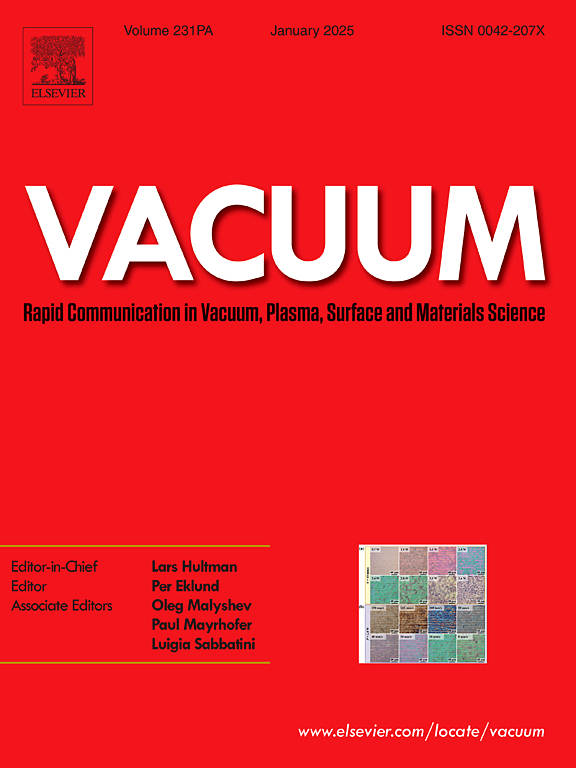基于喷水强化的钛铝复合板表面完整性和裂纹扩展机理研究
IF 3.8
2区 材料科学
Q2 MATERIALS SCIENCE, MULTIDISCIPLINARY
引用次数: 0
摘要
本研究探讨了水射流(WJ)增强对钛/铝复合板表面完整性和裂纹扩展的影响机制。研究人员使用 ABAQUS 建立了水射流增强和裂纹扩展的有限元模型,并通过实验分析了不同射流速度对残余应力和表面粗糙度等表面完整性参数的影响。结果表明,在经过 WJ 增强处理的试样中,射流速度与表面粗糙度和最大残余压应力之间存在正相关关系。具体来说,当喷射速度从 300 mm/s 增加到 350 mm/s,表面粗糙度增加了约 4.2 倍,达到约 0.95813 μm,而最大残余压应力则从 1109.9 MPa 增加到 1472.5 MPa。残余压应力的均匀分布在很大程度上降低了应力强度因子。较高的喷射速度引起的残余压应力有效地减缓了裂纹的扩展。残余压应力作为等效阻尼层的理论解释进一步验证了 WJ 增强在减少钛/铝复合材料裂纹扩展方面的有效性。本文章由计算机程序翻译,如有差异,请以英文原文为准。
Study on surface integrity and crack propagation mechanism of Ti/Al composite plates enhanced based on water jet peening
This study investigates the mechanisms through which water jet (WJ) enhancement affects surface integrity and crack propagation in Ti/Al composite plates. Finite element models for both WJ enhancement and crack propagation were developed using ABAQUS, complemented by experiments analyzing the influence of different jet velocities on surface integrity parameters, such as residual stress and surface roughness. These parameters were then examined for their effects on the stress intensity factor (SIF), fatigue crack propagation rate (FCP), and crack propagation path.The results demonstrated a positive relationship between jet velocity and both surface roughness and maximum residual compressive stress in specimens treated with WJ enhancement. Specifically, as jet velocity increased from 300 mm/s to 350 mm/s, surface roughness rose approximately 4.2-fold to around 0.95813 μm, while maximum residual compressive stress increased from 1109.9 MPa to 1472.5 MPa. The uniform distribution of residual compressive stress contributed significantly to the reduction in the stress intensity factor.Additionally, the crack propagation rate was inversely correlated with jet velocity. The residual compressive stress induced by higher jet velocities effectively slowed crack propagation. The theoretical interpretation of residual compressive stress as an equivalent damping layer further validated the effectiveness of WJ enhancement in reducing crack propagation in Ti/Al composites.
求助全文
通过发布文献求助,成功后即可免费获取论文全文。
去求助
来源期刊

Vacuum
工程技术-材料科学:综合
CiteScore
6.80
自引率
17.50%
发文量
0
审稿时长
34 days
期刊介绍:
Vacuum is an international rapid publications journal with a focus on short communication. All papers are peer-reviewed, with the review process for short communication geared towards very fast turnaround times. The journal also published full research papers, thematic issues and selected papers from leading conferences.
A report in Vacuum should represent a major advance in an area that involves a controlled environment at pressures of one atmosphere or below.
The scope of the journal includes:
1. Vacuum; original developments in vacuum pumping and instrumentation, vacuum measurement, vacuum gas dynamics, gas-surface interactions, surface treatment for UHV applications and low outgassing, vacuum melting, sintering, and vacuum metrology. Technology and solutions for large-scale facilities (e.g., particle accelerators and fusion devices). New instrumentation ( e.g., detectors and electron microscopes).
2. Plasma science; advances in PVD, CVD, plasma-assisted CVD, ion sources, deposition processes and analysis.
3. Surface science; surface engineering, surface chemistry, surface analysis, crystal growth, ion-surface interactions and etching, nanometer-scale processing, surface modification.
4. Materials science; novel functional or structural materials. Metals, ceramics, and polymers. Experiments, simulations, and modelling for understanding structure-property relationships. Thin films and coatings. Nanostructures and ion implantation.
 求助内容:
求助内容: 应助结果提醒方式:
应助结果提醒方式:


